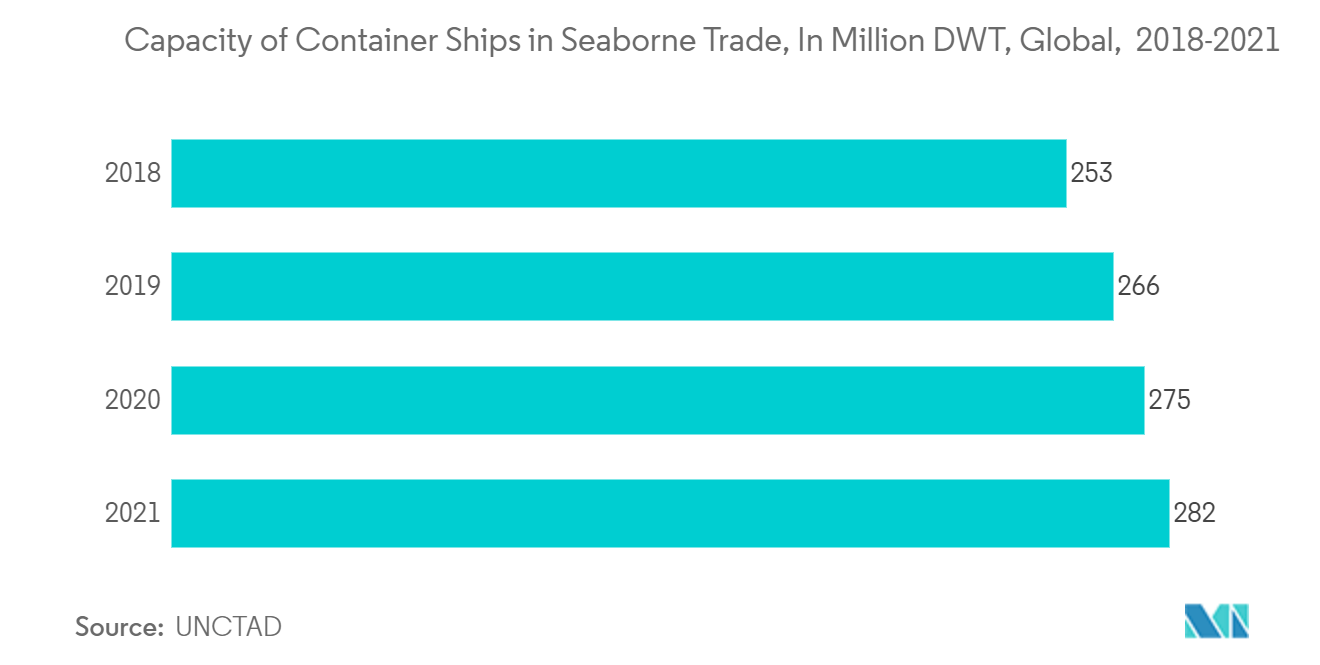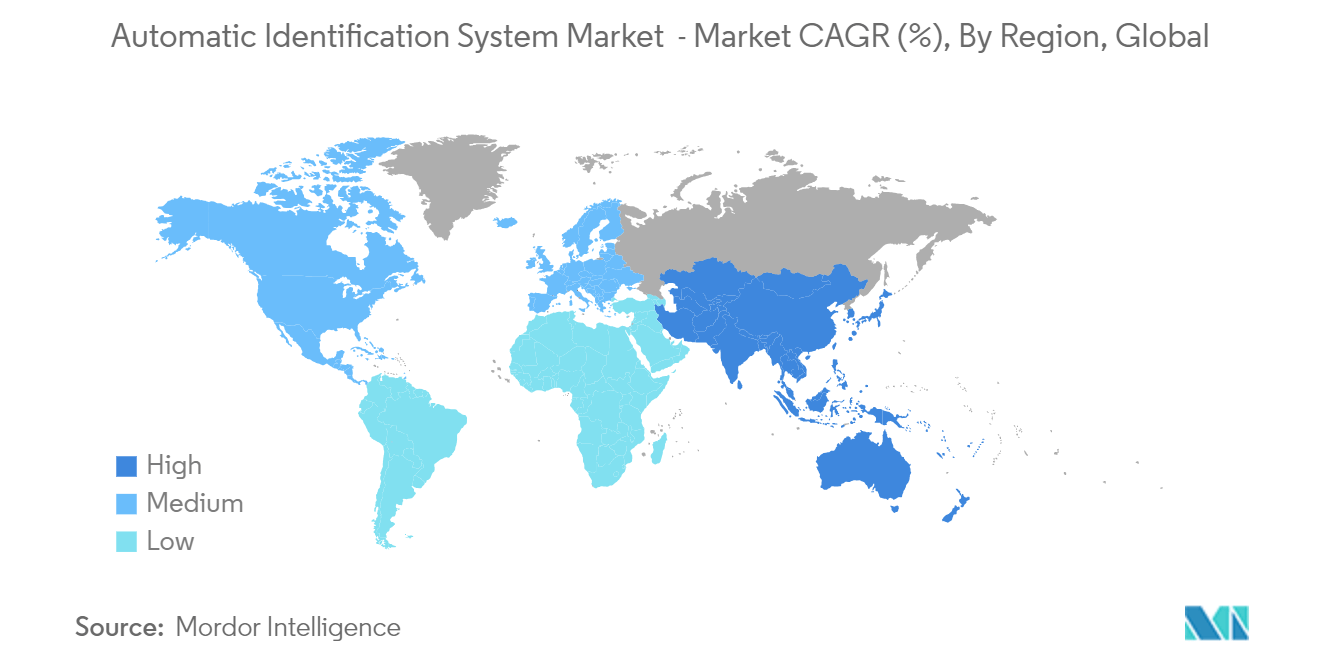Market Trends of Automatic Identification System Industry
Fleet Management is Expected to Hold Significant Share
- According to the United Nations Conference on Trade and Development's (UNCTAD) Review of Maritime Transport 2021 International, marine shipments declined by 3.8% to 10.65 billion metric tons. The world fleet comprised 99,800 ships of 100 gross metric tons or more in early 2021, equivalent to 2,134,639,907 DWT (deadweight tonnage) of capacity, and the global shipping fleet grew by 3% in the year leading up to January 1, 2021. With the growing number of ships, it has become difficult for shipping companies to manage and analyze these large fleets as the reporting requirement and emission standards continuously evolve.
- Ships can connect via the fleet management system, sharing crucial information and updates. The operators can plan the arrival and departure of ships in predetermined zones. This is critical for traveling through congested ports and pre-defined zones where they must schedule slots that are only available for a limited time. The shipping businesses must pay for these slots; they may have to pay even more if they do not arrive during the scheduled time.
- Companies such as Big Ocean Data are adding capabilities to their fleet management solutions, such as a 5-day weather forecast and risk-based routing capability. As the European Union (EU) plans the subsequent EU monitoring, reporting, and verification (MRV) rule to monitor emissions, fleet management solutions will play a critical role in the future for ships operating in the EU. The fleet management system may reduce the time and effort required to record speed, fuel consumption, pollutants, and work statistics.
- With the help of fleet management solutions, shipping companies can control their fleet in real-time, due to which ships can navigate around any unforeseen climate situation. The fleet managers can now trigger alarms with no lead times, so the crew on the ships can make timely decisions.

North America is Expected to Hold Significant Share
- The United States Coast Guard (USCG) has been a key driver in promoting AIS adoption and implementation in North America. The USCG has implemented the Nationwide Automatic Identification System (NAIS), a network of AIS receivers and transmitters along the US coastline and inland waterways. This program aims to enhance maritime situational awareness, improve navigation safety, and support maritime security efforts. The USCG's commitment to AIS implementation demonstrates North America's leadership in the market.
- The Canadian Coast Guard has also prioritized AIS adoption as part of its maritime safety and security initiatives. Canada has implemented the National AIS System, which covers major waterways, including the Great Lakes and the St. Lawrence Seaway. The system enables vessel tracking and collision avoidance and aids in search and rescue operations. The Canadian Coast Guard's emphasis on AIS highlights North America's role in driving the market's growth.
- North America is home to leading AIS technology providers that have made significant contributions to the market. For instance, exactEarth, headquartered in Canada, is a major player in satellite-based AIS solutions. They operate a constellation of satellites to provide real-time vessel tracking data globally. Similarly, companies like ORBCOMM and Kongsberg Maritime, based in the United States, offer AIS solutions and services, including hardware, software, and analytics, catering to the North American market and beyond.
- North America's defense and homeland security sectors have extensively adopted AIS technology for maritime surveillance and security purposes. For example, the United States Department of Defense (DoD) utilizes AIS data to enhance maritime domain awareness and monitor vessel movements for national security purposes. These applications of AIS in defense and homeland security underline the region's significance in the global market.

